Christmas in Germany: A Winter Wonderland of Traditions

Christmas in Germany is one of the most magical celebrations, making you feel as if you were in a holiday movie. Snow, Christmas lights all over the cities, delicious Stollen and Glühwein and their breathtaking Christmas markets take center stage, giving Germany some of the most beautiful Christmas traditions around the world.
Each country has its own Christmas traditions that are worth exploring. If you celebrate Christmas in France you’ll enjoy their exquisite Bûche de Noël or if you spend Christmas in Mexico you’ll discover “Las Posadas”, where kids dress up and represent Mary and Joseph’s pilgrimage to Bethlehem. For some beautiful nativity scenes, you have to check out Christmas in Itlay.
In Germany, different traditions and foods are on offer, creating a festive atmosphere unique to this country. From enchanting Christmas markets to time-honored customs, celebrating Christmas in Germany offers an experience like no other. Let's explore its traditions, history, food and more!
Jump to Section
- The History of Christmas in Germany
- German Christmas Traditions
- Festive German Foods
- Christmas Decorations in Germany
- Where to spend Christmas in Germany
The History of Christmas in Germany

What is the German Christmas called? Weihnachten. This celebration goes from December 24th to December 26th and during this period different traditions take place, like the Advent calendar and Advent wreath, both German inventions that help count down the days to Christmas Eve.
On December 6th, Germans celebrate St. Nicholas Day, where children receive small gifts and sweets in their polished boots—a tradition honoring the benevolent saint known for his generosity.
The History of Christmas in Germany dates back to ancient pagan traditions that were later integrated with Christian costumes. The tradition of the Christmas tree or Tannenbaum, originated in Germany during the 16th century when devout Christians brought decorated trees into their homes.
Some fun facts about Christmas in Germany include their enchanting Christmas markets or Weihnachtsmärkte, which date back to the Late Middle Ages. These markets are a hallmark of the German festive season, featuring wooden stalls selling handcrafted ornaments, traditional foods like Lebkuchen (gingerbread) and warm Glühwein (mulled wine) to ward off the winter chill.
Another interesting custom is the hiding of a pickle-shaped ornament in the Christmas tree; the first child to find it on Christmas morning receives an extra gift, adding a playful element to the holiday festivities.
German Christmas Traditions
How is Christmas celebrated in Germany? From advent calendars to Krampus night, Germany has a variety of traditions that have been around for centuries. Each tradition adds its own unique touch to the festive celebrations, making Christmas in Germany a magical experience. These are the seven most popular traditions:
1. Advent Wreaths (Adventskranz)
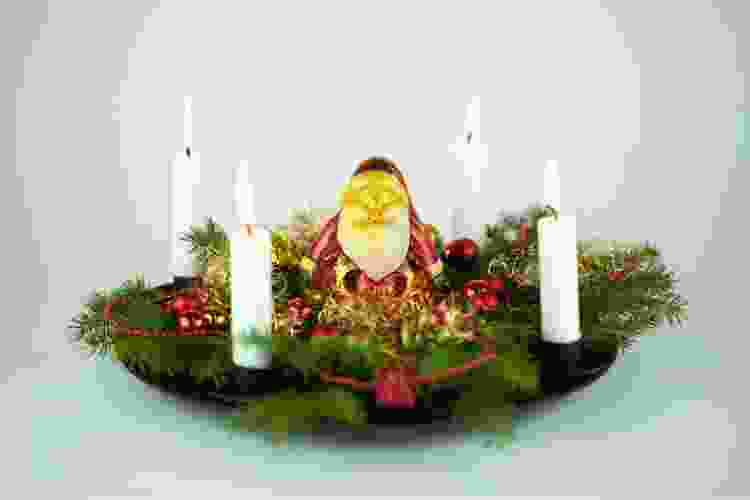
Beginning on the fourth Sunday before Christmas, German families create an Advent wreath adorned with four candles. Each Sunday, one more candle is lit, symbolizing the anticipation of Christmas. This tradition brings families together to share stories and enjoy the festive atmosphere. Additionally, it's common to have Advent calendars where kids open them, revealing small chocolates or gifts as they count down to the holiday.
2. St. Nicholas Day (Nikolaustag)
Celebrated on December 6th, children place polished boots or shoes outside their doors on the night of December 5th. St. Nicholas visits overnight, filling them with sweets, toys and fruits if they've been good—or a rod if they've misbehaved. This day honors the saint known for his generosity.
3. Krampus Night (Krampusnacht)
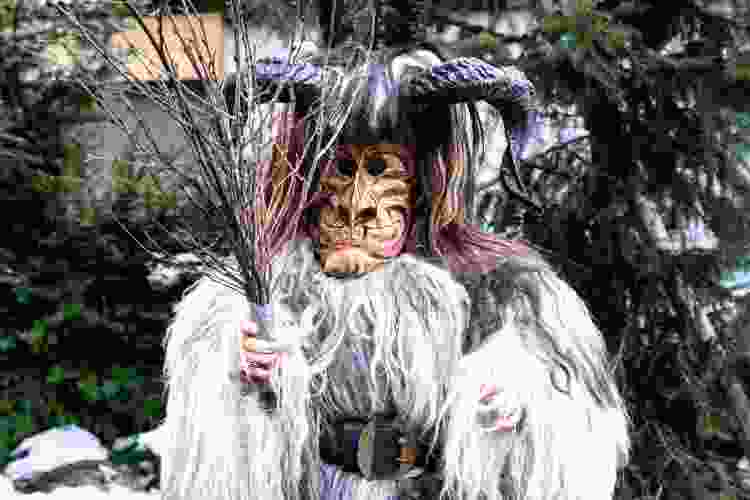
On the eve of St. Nicholas Day, December 5th, folklore tells of Krampus, a horned creature who punishes naughty children. In some regions of Germany, people dress up as Krampus and roam the streets, creating a spooky experience that adds a twist to the holiday season.
4. Christmas Markets (Weihnachtsmärkte)
Throughout December, town squares transform into festive Christmas markets filled with wooden stalls selling handcrafted gifts, ornaments and traditional German foods like Lebkuchen (gingerbread) and Bratwurst. Sipping on warm Glühwein (mulled wine) while browsing the markets is a popular way to celebrate.
5. Christmas Eve Celebrations (Heiligabend)
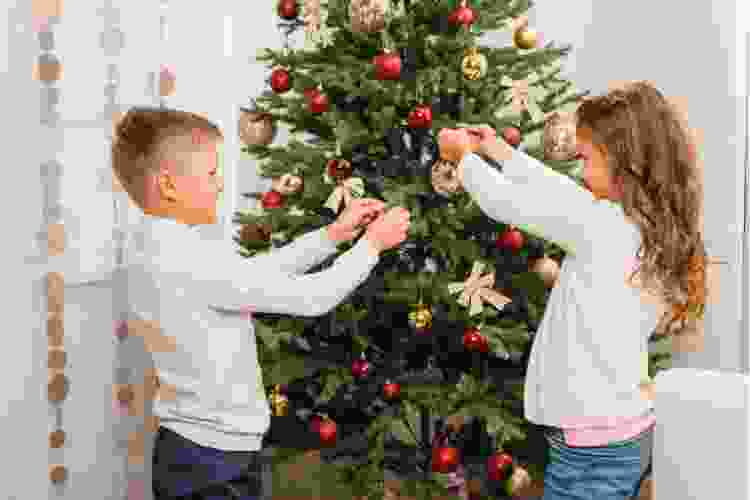
In Germany, Christmas Eve is the main event for family gatherings and gift-giving, known as Bescherung. Families decorate the Tannenbaum (Christmas tree) together, sing carols and enjoy a special meal, often featuring dishes like roast goose and Stollen, a fruit-filled bread.
6. Christmas Angels (Weihnachtsengel)
Angels play a significant role in German Christmas decorations. They symbolize peace and joy and are commonly used as ornaments or tree toppers. The Weihnachtsengel is believed to bring blessings to the household during the festive season.
7. Feuerzangenbowle
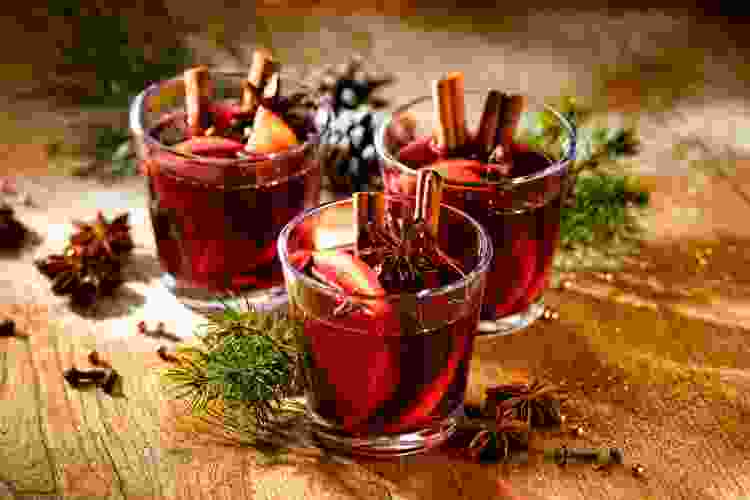
This traditional German drink is a mulled wine punch made by dripping rum-soaked sugar loaves into a bowl of hot wine. The sugar loaf is set on fire, creating a dramatic and warming beverage that's often enjoyed at Christmas markets or festive gatherings.
While Germany's traditions are deeply rooted, it's interesting to see how other countries celebrate the holiday. For example, Christmas in Japan is more commercial, with couples treating it as a romantic holiday and enjoying activities like viewing Christmas lights and dining out.
Festive German Foods
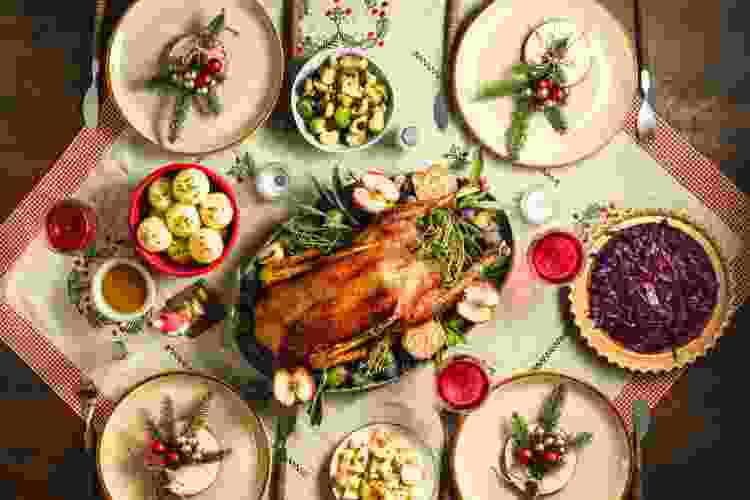
Christmas in Germany is known not only for its heartwarming traditions but for its delicious food. The holiday season is marked by a variety of traditional dishes and treats that bring families and friends together.
One of the most iconic German Christmas treats is Stollen, a rich fruit bread filled with marzipan, nuts and dried fruits, then dusted with powdered sugar. It's a staple on German holiday tables and makes for delightful Christmas breakfast ideas when sliced and served with a warm cup of coffee or tea.
Another traditional treat is Lebkuchen, a type of gingerbread cookie often decorated with icing and abundantly found at Christmas markets.
For the main festive meal, many German families enjoy Weihnachtsgans, which is roast goose seasoned with herbs and served with sides like red cabbage and potato dumplings. This hearty dish is perfect for Christmas party food, bringing everyone together around the table. Sausages like Weißwurst and Bratwurst are also popular, especially at outdoor markets where they can be enjoyed hot off the grill.
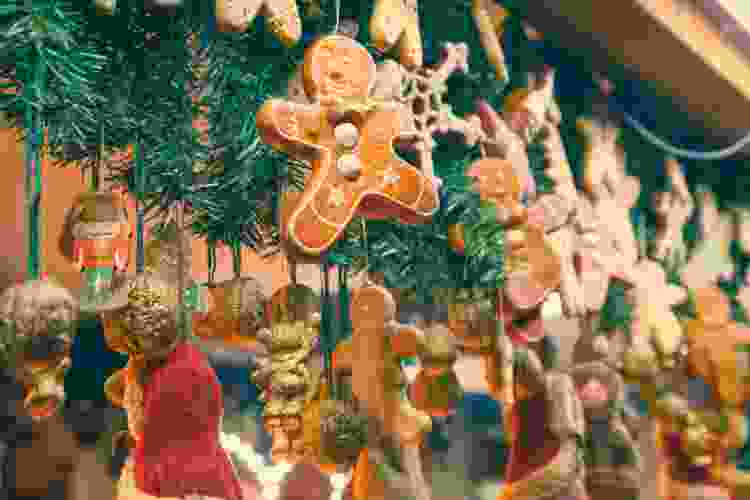
No German Christmas is complete without Glühwein, a warm mulled wine spiced with cinnamon, cloves and citrus, perfect for warding off the winter chill. For those seeking non-alcoholic options, Kinderpunsch is a sweet, spiced fruit punch enjoyed by children and adults alike.
While Germany's Christmas menus include these hearty, warming foods during the cold winter months, for other countries it is the other way around. For example, Christmas in Australia, where the holiday falls in the middle of summer. Australians often celebrate with barbecues, fresh seafood and light salads, showcasing how climate influences festive culinary traditions.
Fun facts about Christmas in Germany include the tradition of baking festive cookies, known as Weihnachtsplätzchen, which are often made in various shapes and flavors, then shared with family and friends or given as gifts.
Christmas Decorations in Germany

Christmas in Germany wouldn’t be complete without their traditional decorations. Homes and streets are adorned with evergreen wreaths, twinkling lights and the iconic Tannenbaum or Christmas tree, which is often decorated with handcrafted ornaments and candles.
The warmth and glow of these decorations contribute to the magical ambiance of the Christmas in Germany holiday, bringing communities together in celebration.
A tradition during this season is the creation of Christmas crafts, where families gather to make straw stars, wooden nutcrackers, glass baubles, etc. These are some of the most common decorations:
- Nutcrackers – Hand-carved wooden figures that symbolize good luck.
- Advent Wreaths (Adventskranz) – Circular fir wreaths with four candles marking each Sunday of Advent.
- Christmas Pyramids – Wooden, multi-tiered pyramids often featuring nativity scenes and spinning from candle heat.
- Candle Arches (Schwibbogen) – Semi-circular candle holders placed in windows to symbolize hope and light.
- Straw Stars – Traditionally crafted stars made from straw, used to decorate Christmas trees.
- Mouth-blown Glass Ornaments – Delicate, hand-blown ornaments that have been used for generations.
- Paper Stars – Illuminated stars hung in windows, symbolizing the Star of Bethlehem.
If you're planning to experience Christmas in Germany, you'll be greeted by towns and cities transformed into winter wonderlands. From the festively decorated markets to the illuminated historic buildings, the country's commitment to traditional decorations offers an unforgettable holiday experience.
Where to spend Christmas in Germany
Where to spend Christmas in Germany? Germany offers numerous enchanting cities to enjoy the holiday. These are seven of its most popular cities where you can enjoy the holidays:
Nuremberg
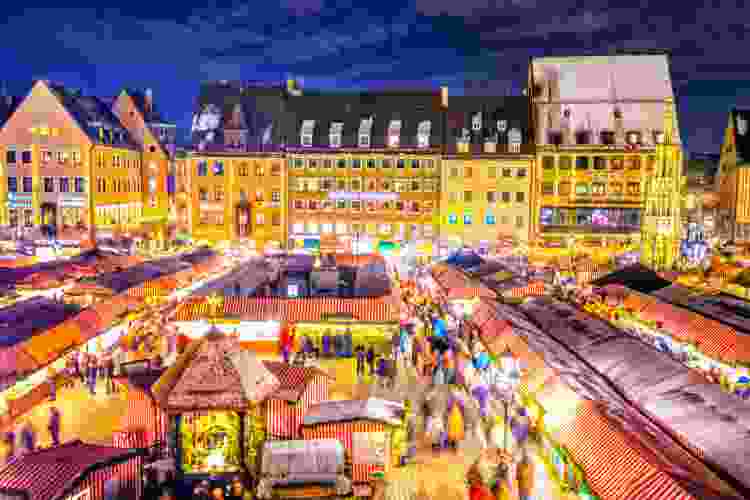
Nuremberg’s Christkindlesmarkt is one of the oldest and most famous Christmas markets in the world. Set against the backdrop of the city’s medieval architecture and surrounded by Christmas light shows, this market features over 180 stalls selling handmade gifts, ornaments and traditional treats like Nürnberger Lebkuchen (gingerbread).
The atmosphere is enhanced by choirs, festive lights and the opening ceremony where the Christkind angel greets the crowds.
Munich
Munich’s Christmas markets, particularly the one at Marienplatz, have a unique Bavarian charm and authenticity. With its majestic Gothic town hall and the Alps in the distance, the market offers a cozy atmosphere where visitors can enjoy roasted chestnuts, glühwein (mulled wine) and handmade Bavarian crafts.
Beyond the market, Munich’s Christmas tram, illuminated streets and ice-skating rinks add to the city’s festive allure. For those seeking a mix of tradition and urban excitement, Munich offers one of the best experiences for the Christmas in Germany holiday.
Dresden

Dresden’s Striezelmarkt, dating back to 1434, is one of Germany’s oldest Christmas markets. The city is known for its festive flair, centered around the market’s 14-meter tall Christmas pyramid and the famous Stollen cake, a sweet bread packed with fruits and nuts.
The city’s Baroque architecture, combined with the lights and decorations, creates a romantic atmosphere, making Dresden a lovely city to spend Christmas in Germany.
Cologne
The Christmas market in front of Cologne’s imposing Gothic cathedral is one of the most iconic in the country. With over 150 stalls, visitors can enjoy local delicacies like Reibekuchen (potato pancakes) and browse unique crafts.
The market’s centerpiece, a towering Christmas tree, along with choirs and live performances, enhance the festive spirit. Cologne’s cultural richness, combined with its vibrant Christmas markets, makes it a top choice for those wondering what is the most beautiful city in Germany during Christmas.
Rothenburg ob der Tauber
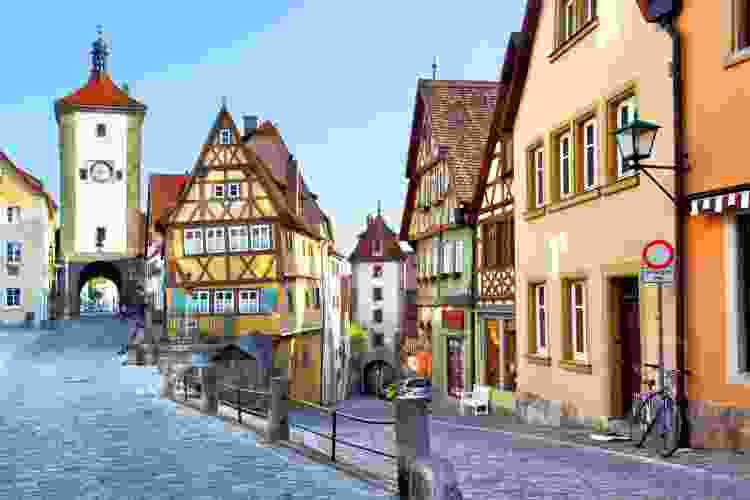
This small, medieval town feels like stepping into a Christmas fairy tale. Its well-preserved half-timbered houses and cobbled streets are decorated with twinkling lights and the Käthe Wohlfahrt Christmas Village operates year-round.
Rothenburg’s Reiterlesmarkt adds to the enchantment with carol singers, horse-drawn carriages and stalls offering mulled wine and pastries. The town’s intimate and timeless charm makes it an ideal place to experience the magic of Christmas in Germany.
Hamburg
With its scenic waterfront, Hamburg’s Christmas markets offer a unique experience. The city’s historic Speicherstadt and Rathausmarkt transform into festive hubs, featuring themed stalls, ice-skating and even Santa’s sleigh flying over the market square.
In addition to the markets, the city’s Elbphilharmonie and stunning light displays create a blend of modern and traditional holiday charm.
Heidelberg

Located in the Neckar River Valley, Heidelberg’s Christmas market is set against the backdrop of a stunning castle. The town’s Old Town glows with festive lights and the cobblestone streets are lined with stalls selling mulled wine, handmade gifts and Christmas crafts. The intimate, small-town feel combined with the breathtaking scenery makes Heidelberg a magical place for a Christmas in Germany holiday.
For those searching for Christmas gifts for teens, Germany’s bustling Christmas markets across all of these cities provide unique options, from handcrafted toys to trendy accessories. Additionally, if you're wondering about the weather, during the Christmas season, Germany typically experiences a chilly and festive winter climate.
The Weather at Christmas Time
Temperatures often hover around freezing, ranging from -1°C to 5°C (30°F to 41°F). Snow is common, especially in southern regions, creating beautiful wintery landscapes that enhance the holiday atmosphere. The cool weather is perfect for enjoying warm beverages like glühwein at Christmas markets, while the twinkling lights and seasonal decorations provide a cozy contrast.
When visiting Germany during Christmas, it's essential to dress warmly to stay comfortable in the cold weather. Layering is key, so wear thermal undergarments, a cozy sweater and a winter coat. Accessories like a scarf, gloves and a knitted hat will help keep you warm while strolling through Christmas markets. Don't forget waterproof boots, as snow and wet conditions can be common during this festive season.
Is Germany a good place to go for Christmas? Germany is not only a good place to spend Christmas—it’s one of the best! The combination of Christmas in Germany traditions, delicious food and festive atmosphere make this holiday feel extraordinary. If you're considering spending Christmas in Germany, you’ll experience how cities and towns across the country transform into magical winter wonderlands.
For even more fun Christmas ideas, check out other experiences happening on Classpop!

